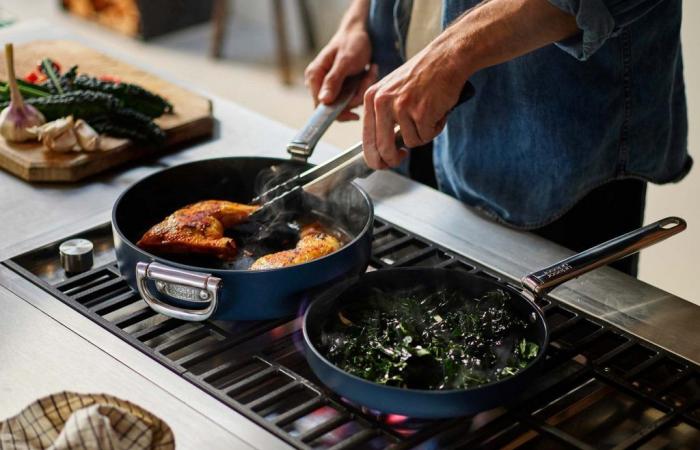Published on October 16, 2024 at 7:01 p.m.
15
View the gallery
© Presse
To prepare small dishes healthily without losing taste or ease of use, here is our selection of PFAS-free kitchen utensils. Enough to combine aesthetics and functionality.
Our health is an essential issue. Whether it involves what we put on the plate or the physical activity we practice, taking care of ourselves on a daily basis doesn’t stop there.
We must take into account our environment in its entirety. If certain factors are visible and identifiable such as stress, junk food or a sedentary lifestyle, others can escape our vigilance. This is the case for PFAS (per- and polyfluoroalkyl substances). Eternal pollutants that hide almost everywhere. Invisible, difficult to identify, over time they have become our most faithful traveling companions.
But where are they hiding? Very often, they are the waterproof clothing. The non-stick coatings of our pans, them again. The airtight cardboard trays that hold our prepared meals or our pizzas, always them.
Also read >> Which cookware should you invest in to avoid eternal pollutants?
What are the risks associated with PFAS?
Once considered revolutionary, they are now proving to be harmful and dangerous. Their components are discharged sustainably into nature, soil and water, thereby contaminating plants and animals that we are likely to eat.
Even more, tiny particles come off our kitchen utensils and we ingest them without even realizing it. The risk? According to ANSES, these substances could have harmful effects on fertility, cholesterol, or the appearance of certain cancers. They are also suspected of interfering with the immune and endocrine systems.
Since 2023, they have even been classified as “carcinogenic to humans” by the International Agency for Research on Cancer (IARC). This means that the issue is worrying and that it is time to take action by finding alternatives in the kitchen.
What should PFAS be replaced with?
It is true that certain habits can be difficult to change, especially when they bring us comfort and practicality like non-stick pans. However, there are plenty of solutions, innovative or not, in which to invest. Here are the materials identified as more “safe” and healthy for our body:
- Stainless steel
- The source
- Ceramics
- Copper
- Iron
- Steel
- The glass
- Terracotta
How do you make a pot or pan naturally non-stick?
If opting for materials other than Teflon can be scary, it’s not at all. It’s all about habit and preparation. For example, you must season it well before the first use. By this action, the food will not stick to the bottom of the pan.
We then start by cleaning and drying our utensil well. Then apply a thin layer of vegetable cooking oil to the bottom and edges before heating over low heat for three to five minutes, or according to the manufacturer’s recommendations. Leave to cool well before passing with a clean cloth or absorbent paper to remove excess fat. We are now ready to cook without the food sticking.
To do it well, the operation can be carried out once a year.
Our selection of PFAS-free kitchen utensils
To cook with peace of mind, here is a non-exhaustive selection of PFAS-free pans, saucepans, Airfryer and other kitchen essentials.






